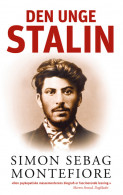

Matters changed dramatically in the late 1980s, with the gradual release of a mass of previously suppressed material. A great deal of probable evidence was available, but much of it was rejected in the West as unreliable or indirect. Historians were therefore in a strange position: before the collapse of the Soviet Union we had to learn what we could of its past from an accumulation of unofficial testimonials, against a background of official silence, distortion, or denial. Soviet embassies and foreign sympathizers similarly averted their eyes from this and the other terrors. At the time and for decades afterward the Soviet position on the famine was simply to deny it merely to speak the word, even in the affected areas, was a crime. Sebag Montefiore's treatment of the greatest horrors of Stalin's rule-the terror-famine of 1933, the "Great Terror" of 1937-1938, and the postwar terrors, with their climax in the antiSemitic "Doctors' Plot"-likewise makes able use of newly available sources. This is crucial to both historical and biographical insight: it confirms that Stalin's fight to retain power was not only a struggle against the people but also, and concomitantly, a struggle against any signs of independence, or even wavering, within his own apparat. Still, if somewhat incidentally, his research has yielded material that greatly improves our historical understanding.įor example, newly uncovered high-level political documents from 1931 to 1934 finally destroy the argument, canvassed even quite recently, that there were no disputes in the post-1930 Politburo-that Stalin ruled unopposed. Sebag Montefiore focuses on the human element (especially the family lives of the dictator, his associates, and his victims), generally treating the vast events of the era as scenery. Antonia Fraser, herself a fine biographer, called Sebag Montefiore's previous book, on the eighteenth-century Russian prince Grigory Potemkin, "a good racy historical read." Those words aptly describe his newest book as well, even though it makes no pretense of being a historical work, properly speaking. In particular the author has mined the rich memories and recorded the opinions of a number of the descendants of key historical figures-men such as Mikoyan and Khrushchev. Simon Sebag Montefiore's biography of Stalin is a large and ambitious overview-and underview-of the Soviet leader's life and epoch, drawn from an impressively wide array of Russian sources.


 0 kommentar(er)
0 kommentar(er)
